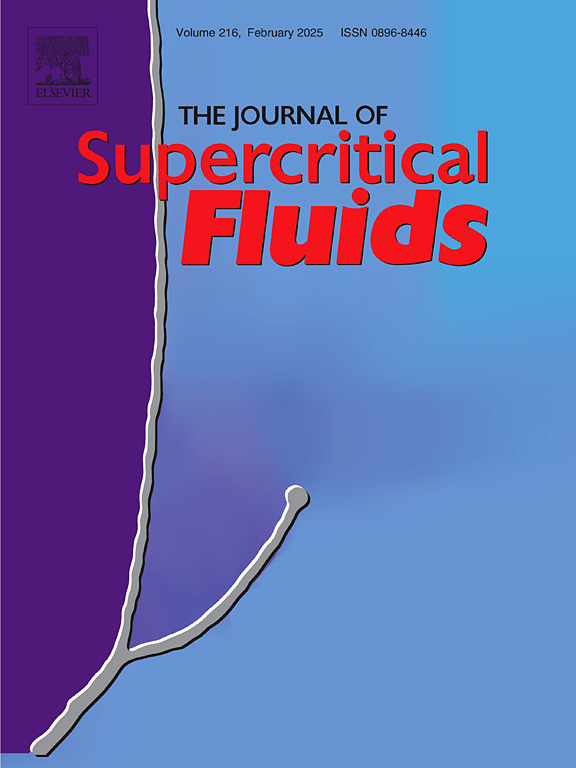超临界辅助雾化制备单分散蛋白质纳米颗粒
IF 3.4
3区 工程技术
Q2 CHEMISTRY, PHYSICAL
引用次数: 0
摘要
采用超临界辅助雾化(SAA)法制备了单分散的牛血清白蛋白(BSA)和溶菌酶(LYS)纳米颗粒。考察了溶剂效应、沉淀器和饱和器温度、蛋白质溶液浓度、二氧化碳与蛋白质溶液的流速比等关键因素对蛋白质颗粒形态和大小的影响。增加蛋白质溶液中的乙醇含量会减小颗粒大小,这可能是由于二氧化碳溶解的乙醇水溶液增强了二次雾化作用。较高的沉淀器和饱和器温度增加了蛋白质粒度。这种效应归因于热变性引起的分子间聚集。在最佳条件下,BSA和LYS颗粒的平均尺寸分别为430 nm和300 nm,平均工艺回收率约为60% %。此外,高温处理增强了蛋白质颗粒的抗水解能力,可用于药物制剂的控释。本文章由计算机程序翻译,如有差异,请以英文原文为准。
Monodisperse protein nanoparticles production by supercritical assisted atomization
Monodisperse nanoparticles of bovine serum albumin (BSA) and lysozyme (LYS) were generated using supercritical assisted atomization (SAA). The impact of several key factors, including the solvent effect, precipitator and saturator temperatures, concentration of protein solutions, and the flow rate ratio of carbon dioxide to protein solutions, on the morphology and size of protein particles was examined. Increasing the ethanol content in the protein solution reduced the particle size, likely due to enhanced secondary atomization by CO2-dissolved aqueous ethanol. Higher precipitator and saturator temperatures increased protein particle size. This effect was attributed to intermolecular aggregation from thermal denaturation. Under optimal conditions, the mean sizes of the BSA and LYS particles were 430 nm and 300 nm, respectively, along with an average process recovery of approximately 60 %. In addition, high-temperature processing enhanced the hydrolytic resistance of protein particles and could be used for the controlled release of drug formulations.
求助全文
通过发布文献求助,成功后即可免费获取论文全文。
去求助
来源期刊

Journal of Supercritical Fluids
工程技术-工程:化工
CiteScore
7.60
自引率
10.30%
发文量
236
审稿时长
56 days
期刊介绍:
The Journal of Supercritical Fluids is an international journal devoted to the fundamental and applied aspects of supercritical fluids and processes. Its aim is to provide a focused platform for academic and industrial researchers to report their findings and to have ready access to the advances in this rapidly growing field. Its coverage is multidisciplinary and includes both basic and applied topics.
Thermodynamics and phase equilibria, reaction kinetics and rate processes, thermal and transport properties, and all topics related to processing such as separations (extraction, fractionation, purification, chromatography) nucleation and impregnation are within the scope. Accounts of specific engineering applications such as those encountered in food, fuel, natural products, minerals, pharmaceuticals and polymer industries are included. Topics related to high pressure equipment design, analytical techniques, sensors, and process control methodologies are also within the scope of the journal.
 求助内容:
求助内容: 应助结果提醒方式:
应助结果提醒方式:


